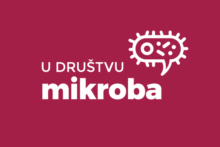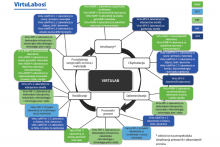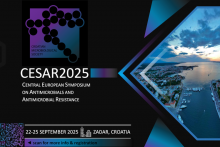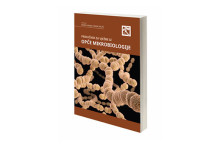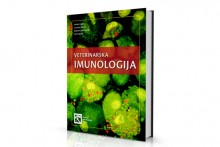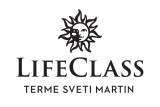FEMS history
History
FEMS has from its small but sure beginnings grown into a dynamic organization that links forty-six member societies from thirty-six countries. Here you will find a reasonably comprehensive chronicle of FEMS in a narrative style. It is based on “The Federation of European Microbiological Societies: An Historical Review”, by Edwin A. Dawes, FEMS Microbiology Letters 100 (1992) 15-24, with more recent activities added throughout the text.
The Beginnings
The first federation of microbiological societies in Europe was a geographically-restricted consortium entitled the North-West European Microbiology Group (NWEMG), which has turned into existence in 1968. Prior to this, the biochemical societies of Europe had been formed into a much larger grouping known as the Federation of European Biochemical Societies (FEBS), which served as the model for aspirations for a much wider association of European microbiological societies.
The Society for General Microbiology (SGM) financed a preliminary meeting of interested parties in Paris in May 1973. Representatives of thirteen European microbiological societies attended and nine of these delegates were firmly committed to the concept of a Federation.
A draft set of Statutes, based on those of FEBS, was drawn up and circulated to all representatives. It was then agreed that the Headquarters of the Federation should be at the Office of the Society for General Microbiology, where nowadays the Federation’s Registered Office still resides.
An interim Executive Committee was charged with arranging the first meeting of a Council of the Federation in the autumn of 1974, to which all European microbiological societies would be invited to send a delegate, and at this meeting an Executive Committee would be formally elected.
On 22 November 1974 the Council accepted unanimously the appointment of A. Lwoff as President; M. Modarski, Vice-President; H. Smith, Treasurer; A.H. Rose, Secretary-General; and C.J.E.A. Bulder as Meetings Secretary.
The FEMS Council
The composition of the FEMS Council was established as comprising the Officers of the Federation together with one delegate from each member society, and meeting once per annum.
The pattern of the meetings evolved into the presentation of the Officers’ reports on the previous years’ work, the approval of meetings for FEMS support, the award of fellowships and discussion of any relevant business. The meetings provide an excellent forum for interaction between the member societies and for exchange of views.
The annual Council meeting is normally scheduled to link with a FEMS symposium and efforts are made to rotate the venue through different countries of the Federation.
At the second Council meeting, held in Vienna in 1975, it was announced that, after two years of negotiations, the Federation had been granted charitable status under UK law.
Finance
From the inauguration of FEMS the constituent societies were expected to pay an annual subscription based on a rate of 1.80 Swiss Francs per member. The agreements reached with the Society for General Microbiology and Society for Applied Bacteriology in 1977-1978 for the association of their journals with FEMS brought a crucial injection of funds in the early years, and helped to carry the Federation through the difficult period until revenue from FEMS Microbiology Letters ensured financial security.
As the assets grew so were the Treasurers able to increase the expenditure on meetings, and also to recommend support for workshops and the funding of FEMS fellowships.
Scientific Meetings and Workshops
The first FEMS symposium, on ‘Photosynthetic prokaryotes’, was held at the University of Dundee, Scotland, in August 1976. It was followed in November of the same year with one on ‘Gonorrhoea’ at the Zoological Society in London, and a symposium on ‘Exotic and resistance plasmids’ in December at L’Institut Pasteur, Paris.
The meeting held jointly between the NWEMG, the Society for General Microbiology and FEMS at Dublin, in September 1979, was noteworthy because on that occasion the NWEMG was formally wound up after its eleven years of existence.
The post of Meetings Secretary was rightly perceived to be a keystone in the edifice of the Federation. With responsibilities for all FEMS Symposia and Workshops, liaising with local organizers in venues throughout Europe, and tackling the inevitable problems that arise in the planning and organization of scientific meetings, the post is a vital one.
Fifteen FEMS meetings were approved for 2001, receiving grants from € 6 000 to the maximum of € 12 300.
FEMS Publications
Journals
At the first Council Meeting in 1974 it was agreed that FEMS should acquire a Journal for publishing original papers and, later, a Journal for rapid publication. It was accepted, initially, that FEMS should not sponsor a new Journal but rather adopt one already in existence.
From July 1977 financially advantageous proposals were approved with the Society for General Microbiology for the association of FEMS with the Journal of General Microbiology and Journal of General Virology. An association with the Journal of Applied Bacteriology followed in 1978. These links, which continued for several years, played an important role in securing a sound financial base for FEMS in its formative period.
The ambition to start a rapid publication journal was also being pursued vigorously with various European publishing houses by Drs Smith and Stanier in 1976. The outcome was an agreement, approved by the FEMS Council in November 1976, for a rapid publication journal similar to FEBS Letters.
Dave Tempest, then at the University of Amsterdam, was appointed as Chief Editor and the first issue of FEMS Microbiology Letters appeared in January 1977. In 1978 Dave Tempest was also appointed as Publications Manager, for a period of three years.
In 1979 it was agreed to publish a number of short review articles in addition to the short research communications.
The journal grew to five volumes per annum in 1983 and The Executive Committee was convinced that the time was opportune for expanding its publications portfolio. The new President, Hans Veldkamp, and the new Publications Manager, Eddie Dawes, found that two areas of publications, ecology and reviews, would not be expected to affect the interest of the existing FEMS and FEMS-affiliated journals. A market survey by Elsevier confirmed the apparent viability of these proposals.
Publication commenced in January 1985 of FEMS Microbiology Ecology with Hans Veldkamp as Chief Editor, and FEMS Microbiology Reviews under the Chief Editorship of Gerhard Gottschalk.
A fourth journal was added to the FEMS publication portfolio in January 1988 under the Chief Editorship of Heather Dick, FEMS Microbiology Immunology, now renamed as FEMS Immunology and Medical Microbiology.
FEMS Yeast Research is the latest addition. It started in January 2001 with Lex Scheffers as Chief Editor. The birth of this new journal came together with the creation of a Publications Office in Delft as part of the FEMS Central Office.
Circular
When Terry Roberts took up the post of Meetings Secretary in 1977 one of his first tasks was to inaugurate an information sheet for circulation to the members of the constituent societies of FEMS. Titled FEMS Circular, No. 1 appeared in June 1977 and carried statements on policy, finance, publications and meetings. FEMS Circular started as a biannual and provided as of No. 3 a listing of member societies, names and addresses of Officers and Delegates, news of publications, symposia and other topical matters.
As of 1999 production of FEMS Circular is coordinated from FEMS Central Office and responsibility lies with the Publications Officer after her appointment in October 2000.
Symposium volumes
The prime initial objective of FEMS was to sponsor scientific meetings on specific microbiological topics in member nations and, whenever appropriate, to publish proceedings of the events. It was FEMS policy that, whenever feasible, a separate book should derive from the Symposia proceedings. After FEMS Microbiology Reviews came into existence, some papers arising from FEMS Symposia, which were not published in book form, were included in the journal.
Since the first FEMS Symposium in 1976 over 40 Symposium volumes have been published, the majority as substantial hardbacks.
Grants and Fellowships
Laboratory workshops
In 1982 it proved possible to sponsor a workshop that was the first of its kind in Europe, an Advanced Course in Microbial Ecology. Other FEMS workshops followed and in 1989 the Council made funds available for support grants for young scientists, such as graduate students, to attend such laboratory courses. FEMS is currently able to offer € 15 000 towards the cost of running laboratory workshops.
Meetings
Several of the FEMS officers served on the Organizing Committee for the International Congress of Microbiology held at Manchester, UK in 1986. They were determined that young scientists should not be prevented from attending because of expense. The FEMS Council approved in 1985 a scheme for the financial support of two young microbiologists from each member society to attend the Congress. In the event, thirty-one young scientists were supported by FEMS.
FEMS Young Scientist Grants later emerged to enable research workers at an early stage in their careers to attend approved scientific meetings in Europe or Israel. The grants (maximum of € 6 200) are aimed at broadening the knowledge and experience of young scientists and enabling them to meet other workers in their chosen field of research.
Fellowships
In 1987, Treasurer Peter Walker was able to propose the sponsorship of a number of short term fellowships for young scientists who would benefit by spending a month or so in a laboratory abroad to learn new techniques. The available funds permitted the award of ten fellowships per annum and in 2000 no less than 43 fellowships were granted.
Mogućnosti zapošljavanja
National Institute of Biology Announces Fully Funded PhD Position in Viromics
Rok za prijavu: 06.06.2025
Projekt "U Društvu mikroba"
Osnovna svrha projekta je doprinijeti uvođenju, razvoju i održivosti programa društveno korisnog učenja na fakultetima. Više o projektu
Zanimljivosti
Projekt Virtulab
VIRTULAB je virtualno umrežen znanstveno-istraživački laboratorij za primarne i sekundarne sirovine.Naša članica, prof. dr. sc. Dijana Škorić u podkistu o koronavirusu i cjepivu
Podkist je podcast Zavoda za komunikacijske i svemirske tehnologije (ZKIST) u kojem se razgovara o znanstvenim i tehnološkim temama te temama povezanim sa studiranjem i učenjem. Cilj je u opuštenoj atmosferi približiti najnovija znanstvena istraživanja široj publici, dati studentima širi pogled na to što uče te poslušati savjete starijih kolega o studiranju, radu i napredovanju u profesionalnoj karijeri.Postani član HMD-a
Cilj Društva je okupljanje mikrobiologa i stručnjaka srodnih struka s ciljem unapređenja svih grana mikrobiologije.
Skupovi HMD-a
7th Central European Symposium on Antimicrobials and Antimicrobial Resistance (CESAR2025)
Date: 22 - 25 September 2025
Venue: Zadar, Croatia
The 7th Central European Symposium on Antimicrobials and Antimicrobial Resistance (CESAR2025) will be held from September 22-25, 2025, at the Hotel Kolovare in Zadar, Croatia. This attractive tourist city, located in the center of the East Adriatic, is surrounded by stunning natural landscapes, making it an ideal venue for this important event.Ostali skupovi
7th Croatian Congress of Toxicology with International Participation
Date: October 5-8, 2025
Venue: Rab, Croatia
12th Trends in Medical Mycology
Date: 19-22 September 2025
Venue: Bilbao, Spain
Izdavaštvo
Priručnik za vježbe iz opće mikrobiologije
Ovaj sveučilišni priručnik napisalo je petnaestak autora iz desetak visokoškolskih ustanova iz Zagreba i Rijeke, a sadržaj je podijeljen u petnaest, slikama bogato ilustriranih poglavlja u kojima su opisane i obrađene različite bakteriološke, virološke, mikološke, imunološke i molekularno-biološke metode koje se upotrebljavaju u općoj mikrobiologiji koja se studira na nizu različitih fakulteta i visokih škola.
Veterinarska imunologija
Radi se o vrhunskoj literaturi za potrebe visokoškolske nastave iz veterinarske imunologije. Knjiga je svojim sadržajem namijenjena prvenstveno studentima, ali i veterinarima u praksi i nastavnicima.
(Iz recenzije)


